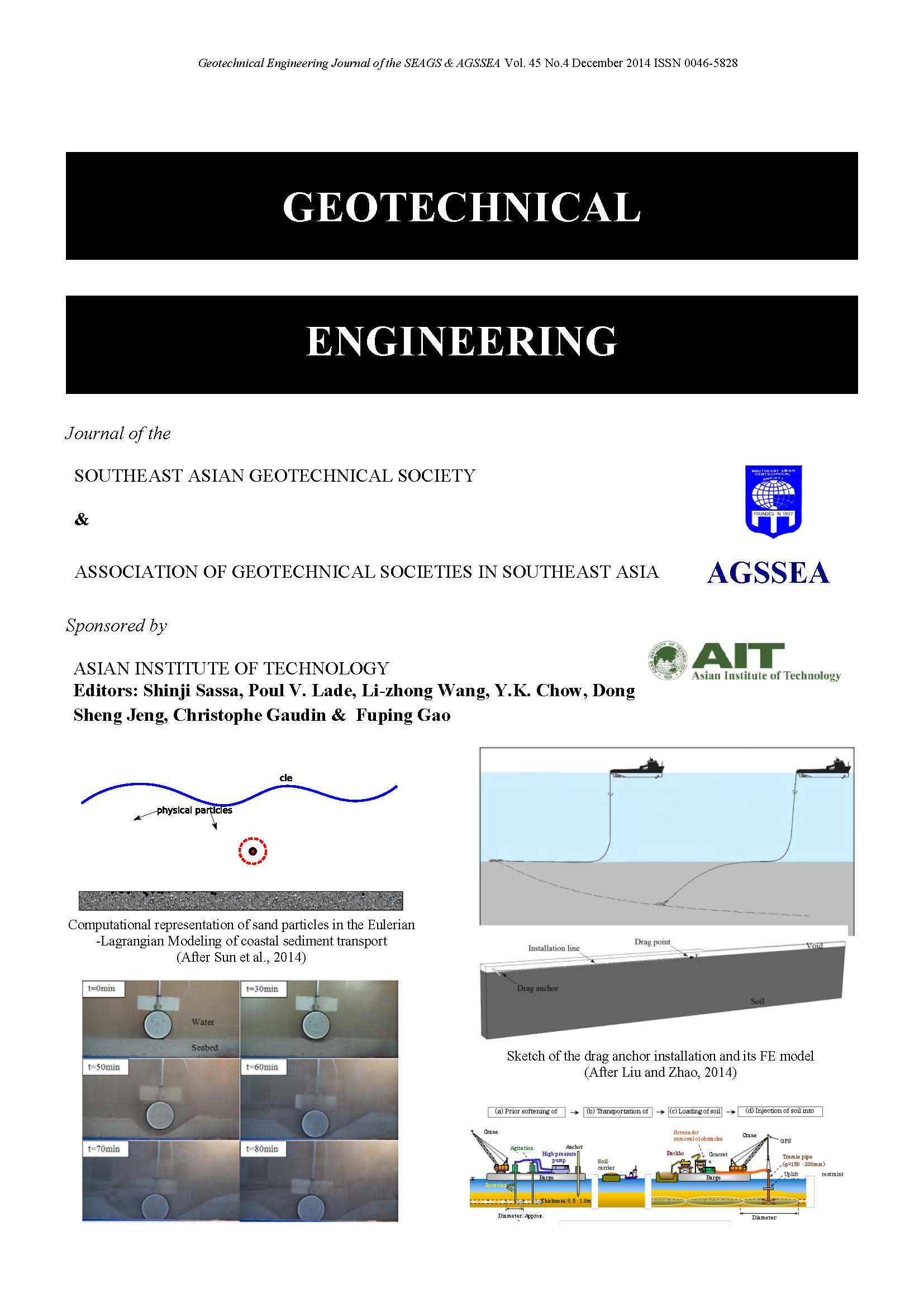A Model for Predicting Pipeline Sinkage Induced by Tunnel Scour
Main Article Content
Abstract
The current design practice for subsea pipeline on-bottom stability (e.g. DNV-RP-F109) does not account the effect of sediment transport around a pipeline. Both field survey and small scale model test results show that seabed scour has a significant effect on pipeline embedment and therefore stability. Physical model tests carried out in an innovative large experimental facility, named the O-tube, at the University of Western Australia, have shown that tunnel scour and the subsequent pipe sinkage into the scour hole tend to stabilize a pipeline which might otherwise become unstable on an assumed stationary seabed, under ramping-up flow conditions. A simple calculation model that incorporates the three-dimensional scour and pipe sinkage due to the soil bearing capacity failure at the supporting span shoulders is proposed. The model parameters were calibrated using the O-tube experimental results. The model serves as a key element of a new pipeline stability analysis method that takes into account seabed mobility.
Article Details

This work is licensed under a Creative Commons Attribution-NonCommercial-NoDerivatives 4.0 International License.
Copyright © 2019 Association of Geotechnical Societies in Southeast Asia (AGSSEA) - Southeast Asian Geotechnical Society (SEAGS).


